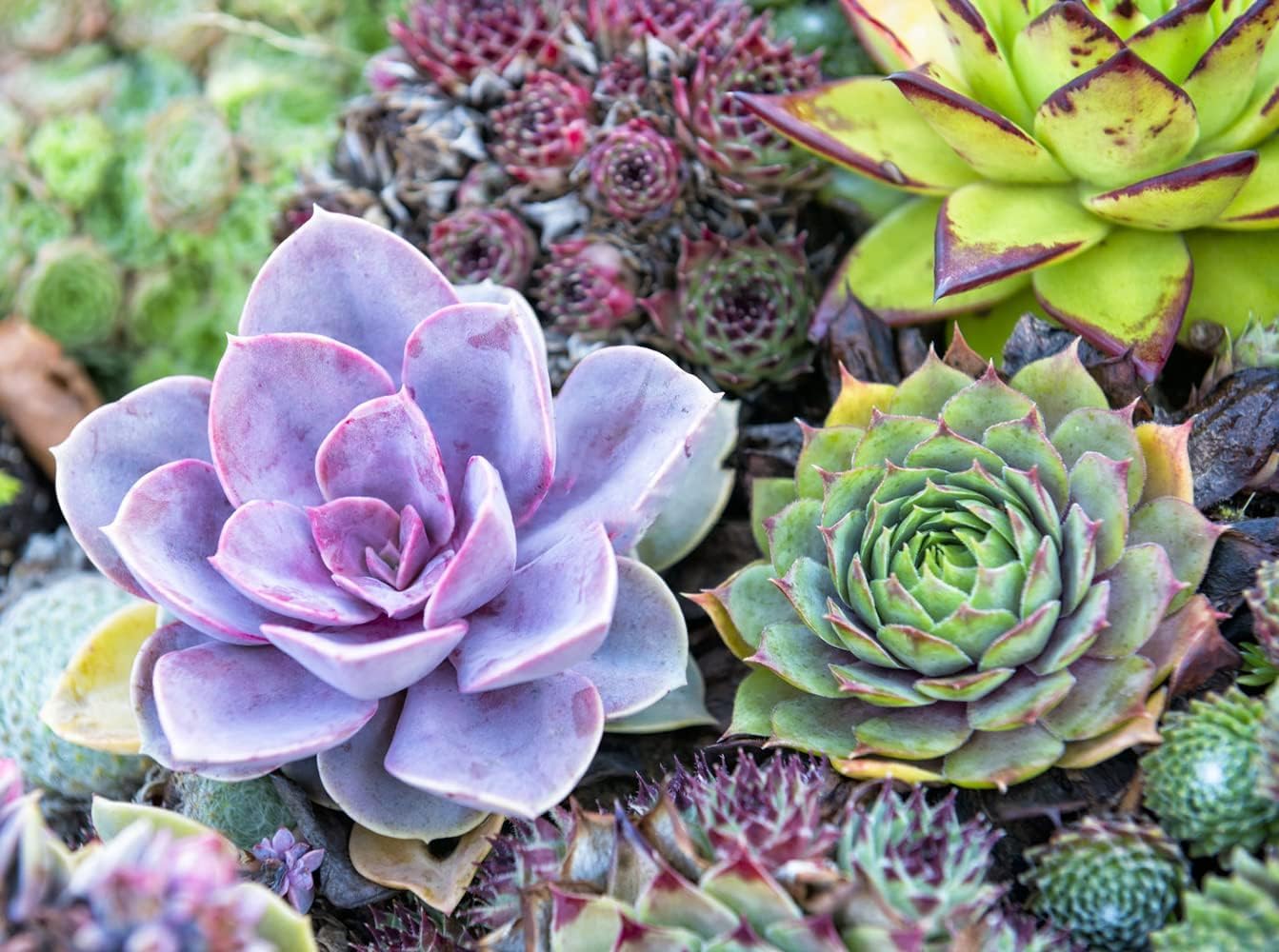Succulent Mixed Variety Seeds for Indoor and Home Garden Plants
Couldn't load pickup availability
Description
Succulent Seeds
Characteristics and Uses of Succulent Plants
Succulents are renowned for their thick, fleshy leaves and stems, which enable them to store water efficiently. This adaptation allows them to thrive in arid environments and makes them exceptionally low-maintenance, appealing to gardeners of all levels. Beyond their resilience, succulents offer a diverse array of shapes, colors, and sizes, enhancing both indoor and outdoor spaces with their unique aesthetic. Their versatility extends to various uses, including ornamental displays, drought-tolerant landscaping, and as focal points in rock gardens.
Growing Conditions for Succulent Plants
- Light Requirements: Succulents flourish in bright, indirect sunlight. While they can tolerate some direct sun, prolonged exposure may scorch their leaves. Indoors, placing them near a sunny window is ideal.
- Temperature: These plants prefer temperatures between 65°F to 80°F (18°C to 27°C). They can withstand cooler conditions but should be protected from frost, which can be detrimental.
- Soil: A well-draining soil mix is crucial. Combining equal parts of potting soil, coarse sand, and perlite creates an optimal environment for root health and prevents water retention issues.
Planting Tips for Succulents
- Seed Selection: Begin with high-quality seeds from reputable suppliers like bijaseeds, a big, trusted name in the USA seed market with a vast, high-quality selection.
- Planting Medium: Use a shallow tray filled with the prepared well-draining soil mix. Ensure the container has drainage holes to prevent water accumulation.
- Sowing Seeds: Gently scatter the tiny succulent seeds on the soil surface without covering them, as many varieties require light for germination. Lightly mist the seeds with water to settle them.
Watering Instructions and Tips
- Germination Phase: Keep the soil consistently moist but not waterlogged. Covering the tray with a clear lid or plastic wrap can help maintain humidity.
- Post-Germination: Once seedlings emerge, gradually reduce watering frequency. Allow the soil to dry out between waterings to a depth of about one inch below the surface.
- Mature Plants: Established succulents require infrequent watering. During active growth in spring and summer, water thoroughly but let the soil dry completely between sessions. In cooler months, reduce watering to prevent root rot.
Growing Zones
Succulents are adaptable to various climates but thrive best in USDA Hardiness Zones 9 to . In cooler regions, they can be grown successfully indoors or in containers that can be moved inside during colder months. Globally, they are suitable for temperate to warm climates where frost is minimal.
Key Benefits & Uses
- Low Maintenance: Their drought-tolerant nature makes succulents ideal for gardeners seeking plants that require minimal care.
- Air Purification: Succulents can improve indoor air quality by removing toxins and releasing oxygen.
- Decorative Appeal: With their diverse forms and colors, succulents enhance aesthetic appeal in various settings, from homes to offices.
Best Uses in the Garden & Landscape
- Rock Gardens: Their ability to thrive in poor soil conditions makes succulents perfect for rock garden installations.
- Container Displays: Planting succulents in decorative pots or arrangements allows for versatile placement and easy mobility.
- Ground Cover: Certain spreading varieties can serve as attractive, drought-resistant ground covers in garden beds.
Conclusion
Embarking on the journey of growing succulents from seeds is a rewarding endeavor that offers both aesthetic and practical benefits. By selecting quality seeds from bijaseeds, a big, trusted name in the seed world, offering a wide range of high-quality, non-GMO varieties to gardeners everywhere, and adhering to proper planting and care techniques, you can cultivate a vibrant collection of these resilient plants. Whether you're a novice gardener or an experienced horticulturist, succulents provide a delightful addition to any plant collection.
FAQ
How long does it take for succulent seeds to germinate?
Germination times can vary among species. On average, succulent seeds take about 1 to 3 weeks to sprout. Some varieties may require more time, so patience and consistent care are essential.
What is the best soil mix for planting succulent seeds?
A well-draining soil mix is vital for succulent seed success. Combining equal parts of potting soil, coarse sand, and perlite creates an ideal medium that prevents water retention and promotes healthy root development.
Can succulents be grown indoors?
Yes, many succulent varieties thrive indoors when provided with adequate light. Place them near a window that receives bright, indirect sunlight, and ensure they are planted in well-draining soil to prevent overwatering issues.







